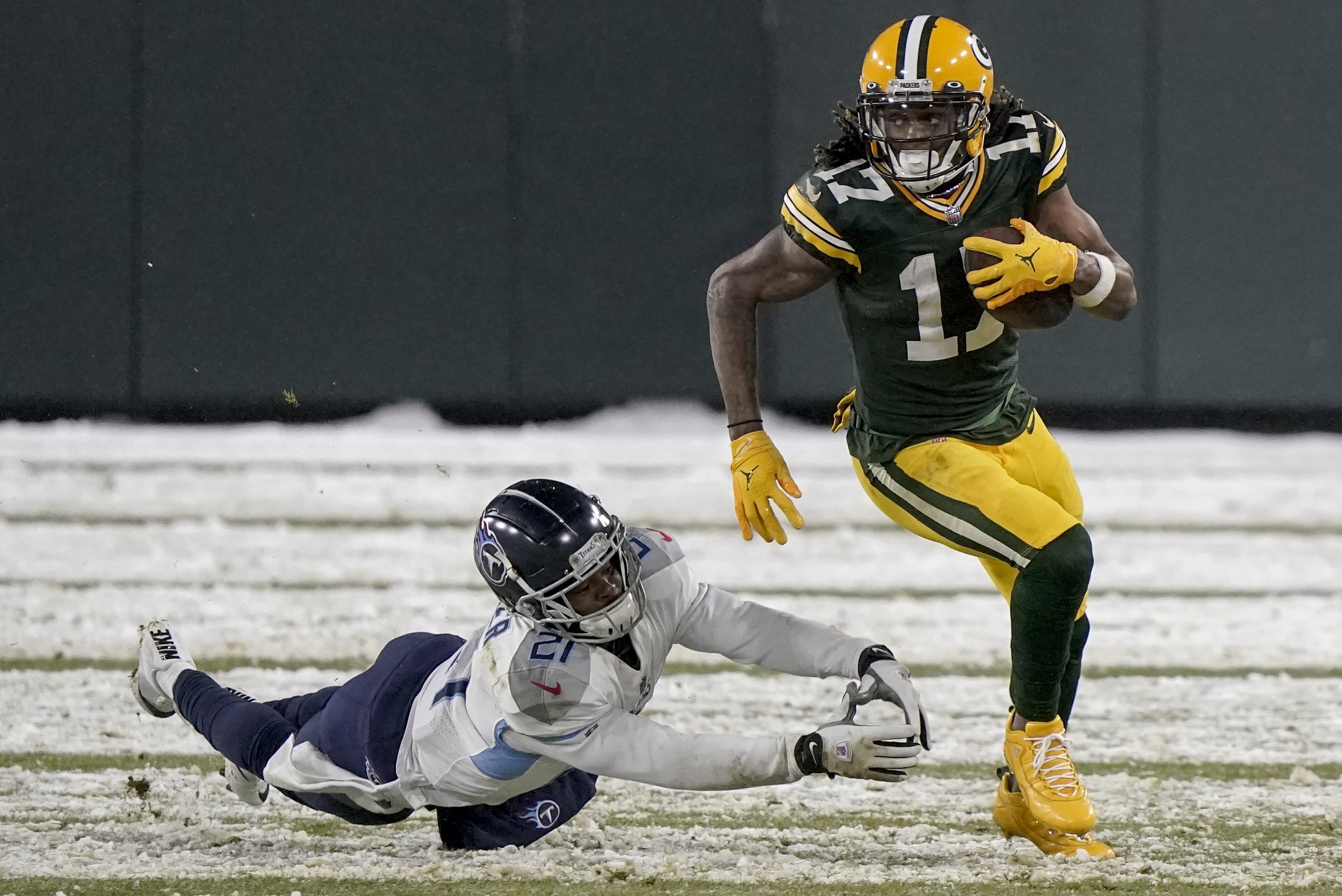
Nobody could stop Adams in 2020.
When measuring receiver performance, it’s important to recognize that some wide receivers play on pass-heavy teams while some play on run-heavy teams. Targets are often mistakenly viewed as a measure of opportunity, when really targets are a form of production; a player who gets a target on a play is doing something positive. The best measure of opportunity is routes run, and team pass attempts serves as a good proxy for that.
Let’s skip Adams, who again blows away the field. Let’s instead look at Titans wide receiver A.J. Brown, who is often the lead horse for the great efficiency numbers that Ryan Tannehill has produced since joining the Titans. Brown missed two games this year, but in those 14 games, he gained 1,075 receiving yards, 55 first downs and 11 touchdowns. Most impressively, this came with only 424 pass attempts (excluding sacks) in those games. Brown picked up a first down on 13% of all Titans pass attempts in the games he played, the fourth-best mark in the NFL; he caught a touchdown on 2.6% of all Tennessee pass plays during those 14 games, the third-highest mark in the league. A receiver can only produce on passing plays, and Brown was a huge reason for the Titans success last year.
For each receiver last year, I calculated how many Adjusted Catch Yards they gained, which is simply receiving yards with a 9-yard bonus for each first down and a 20-yard bonus for each touchdown. [1]Without duplication, so a touchdown only gets 11 additional yards, since each touchdown is always a first down. For Brown, that means he gained 1691 adjusted catch yards; in the 14 games he played, he averaged 3.99 ACY per team pass attempt, the second-best rate in the NFL. Here are the top 100 receivers by this metric: [continue reading…]
References
| ↑1 | Without duplication, so a touchdown only gets 11 additional yards, since each touchdown is always a first down. |
|---|

